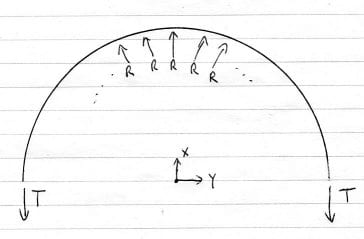-
1
- #1
I have a query regarding API 650 roof to shell junction design. Tank basic details are, Diameter - 33.5 m, height - 12 m , Self supported - Fire water tank, designed for atmospheric.
Since roof is self-supported and diameter is large, Stiffeners /rafters (external)are provided.
If roof is stiffened by rafters (Externally) do we need to comply to API 650 Cl.5.10.5.2 ?
In my opinion, this requirement is not applicable for stiffened roof but Client is pushing us to comply to this requirement. We do not have any clear reference to defend our claim.
I came across an API discussion on the same topic but not sure how topic was concluded.
Also attached discussion copy which was downloaded from API community, in the discussion same point is raised.
Link

